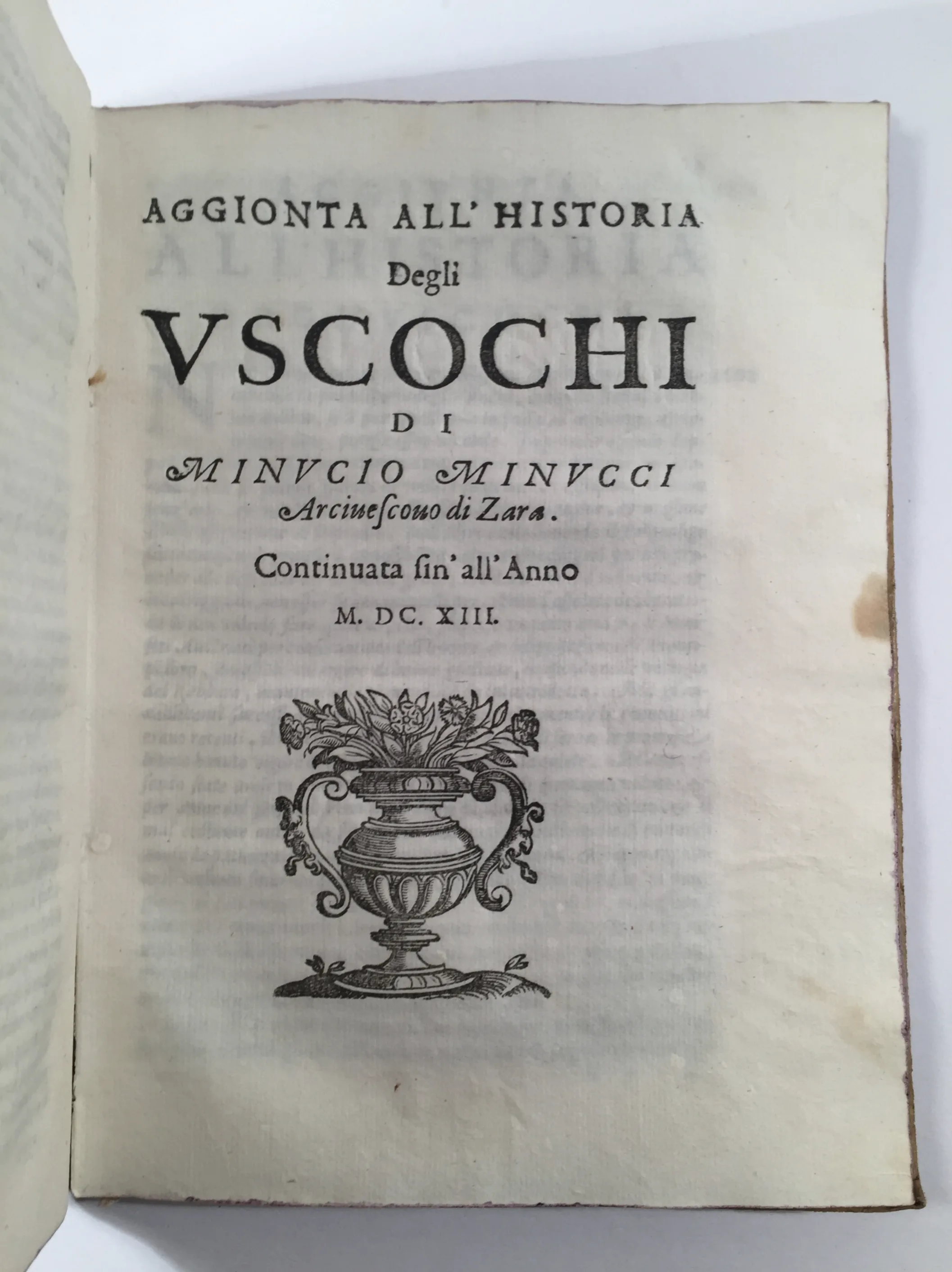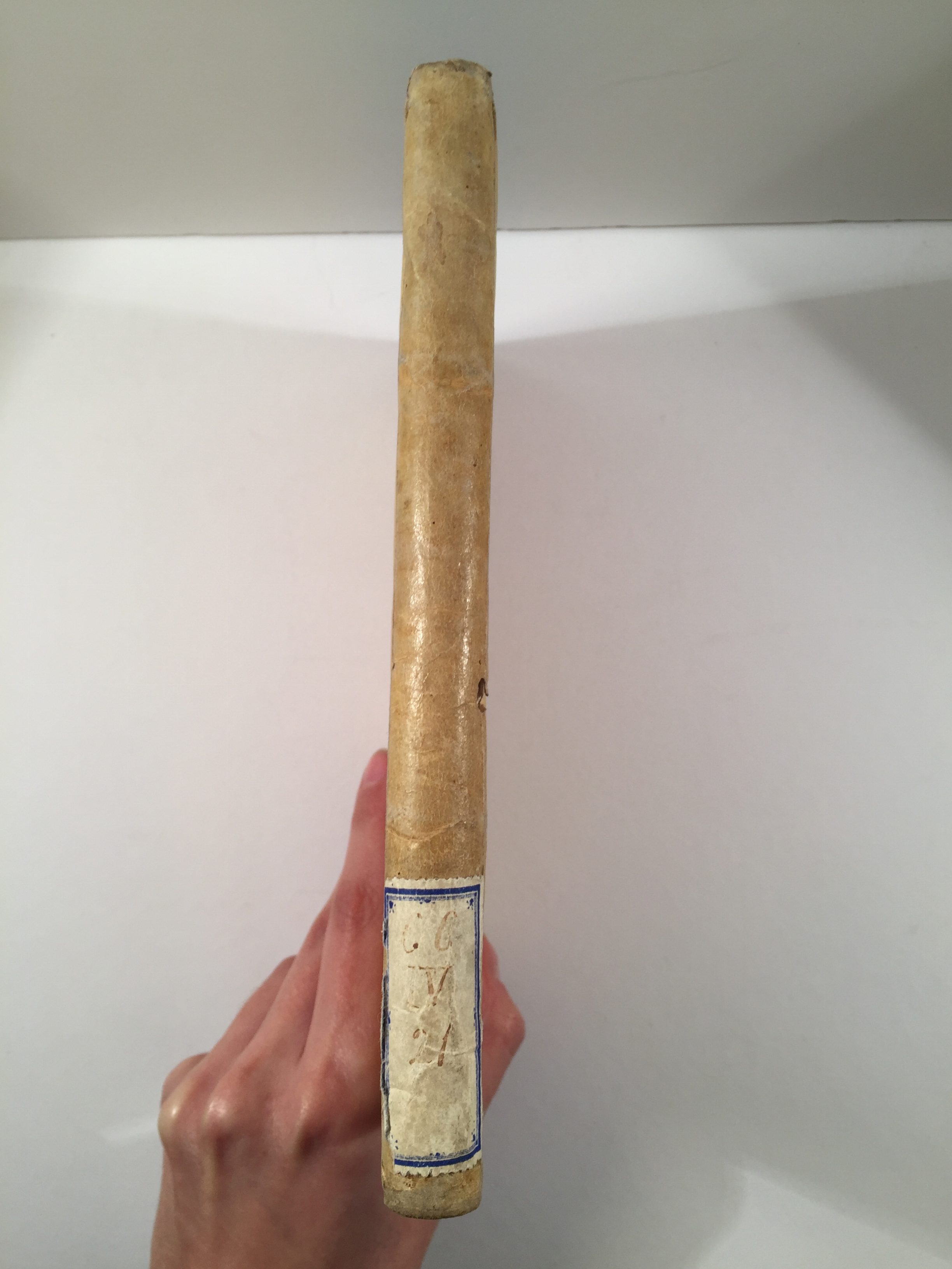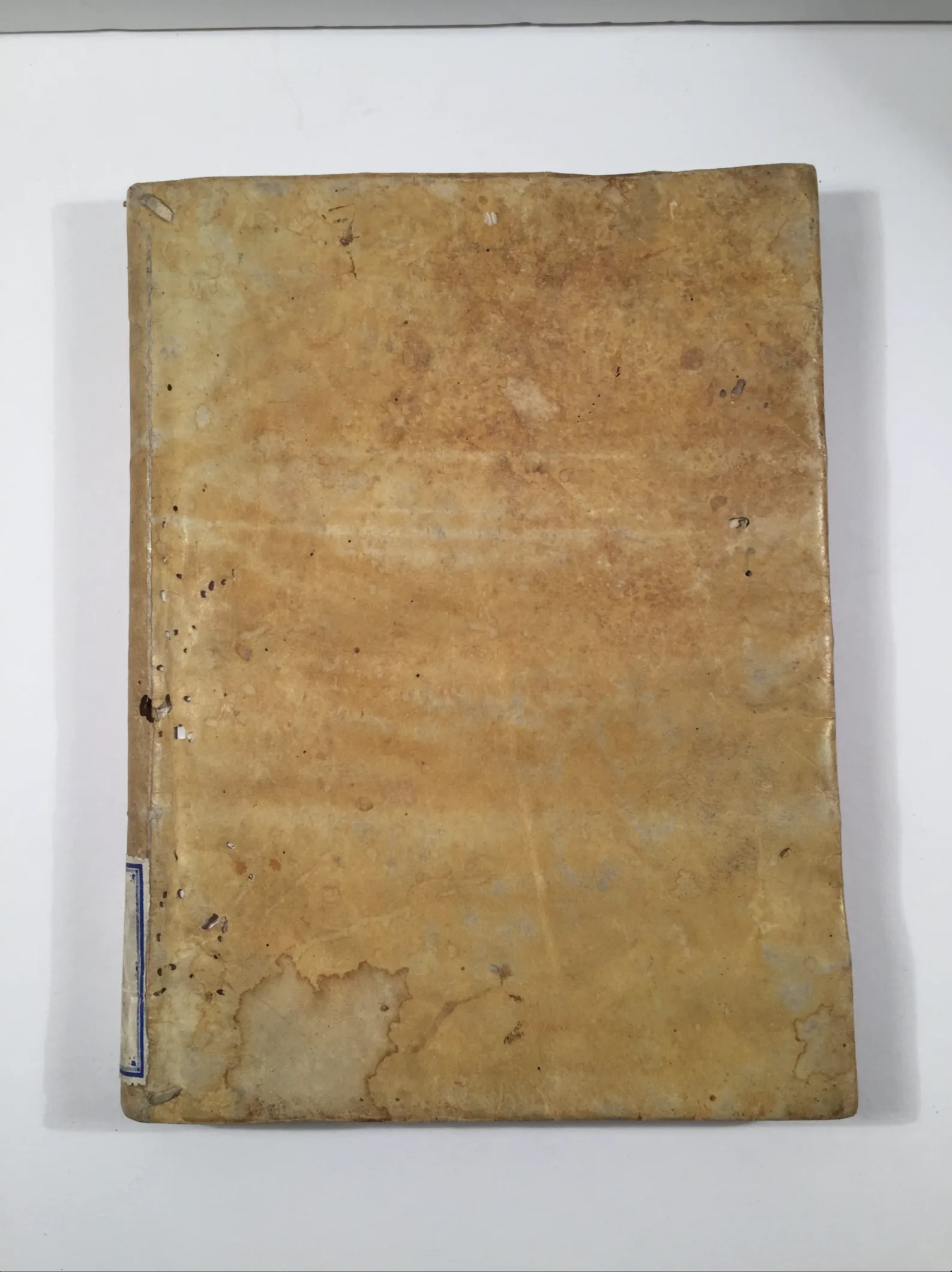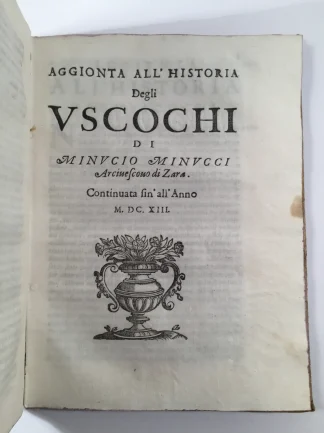MINUCCI, Minuccio
Historia degli Uscochi …Co i progressi di quella gente fino all’Anno 1602; Aggionta all\'Historia degli Uscochi …Continuata sin’ all\'anno 1613; Supplimento dell’historia degli Uscochi
n.pl., n.pr., n.d. [Venice, 1606?]; n.pl, n.pr., n.d. [Venice, 1617?]; n.pl., n.pr., n.d. [Venice, 1617?]£2,750.00
4to. Three works in one. 1): FIRST EDITION, third issue, pp. 63 (1); 2): FIRST EDITION, pp. 58 (2); 3) FIRST EDITION, pp. 58 (2). Italic letter, engraved vase of flowers on title pages, autograph in C17 hand on first, two floriated initials. Occasional spots or marginal mark, very tiny worm hole to first couple on gatherings, a few leaves untrimmed at end, small tear to blank corner of p. 9 in first work and outer margin of p. 21 in last. A very good, crisp and clean copy in contemporary limp vellum, lightly wormed, edges sprinkled red, old label to spine, remains of ties. Case marks in early hand to front pastedown.
A rare miscellany including the early account on the history of the Uskoks, pirates of the Adriatic sea, by Minuccio Minucci (1551-1604), with Aggionta and Supplemento by Paolo Sarpi (1552-1623).
Minucci was an Italian priest from an aristocratic family. He read canon law in Padua where he met Antonio Possevino. In 1585 he was appointed prothonotary apostolic by Pope Sixtus V and in 1595 became archbishop of Zadar in Croatia. His numerous theologian and historical-political works show his wide knowledge. The addition by Paolo Sarpi, describing historical events until 1617, was first published anonymously. Important Venetian author, scholar and theologian, Sarpi was a learned monk of the Servite order living during Venice’s conflict with Pope Paul V. After becoming the Provincial of Venice (1579) he spent time in Rome studying the decrees of the Council of Trent. Then, back to Venice, he became procurator General of the Venetian province of this order and served as a Vicar General.
In the sixteenth century the Uskoks of Senj became the heroes of one of the cycles of the South Slav folk epic (M. Zoric, Gli scrittori italiani del ‘600 e gli slavi del Sud, 1983). Through their story it is possible to examine the power struggle between Venice, the Hapsburgs and the Ottoman Empire. They were a community who crossed the Balkan frontier during the Ottoman invasions to take refuge in the territories of neighbouring states. Some of them formed units of defence against the Turks in Klis fortress, near Split – before it fell in 1537 – and then in the impregnable Senj, on the Mountains of Carnia (Friuli). However, after the Battle of Lepanto on 7 October 1571 and the peace treaty between Venice and the Turks, under Hapsburg control the Uskoks started scouring the Adriatic and the Dalmatian hinterland with their fast boats, pillaging Venetian possessions, and causing the Venetian-Habsburg war (1615-17). The war ended with the Treaty of Madrid, according to which the Austrians agreed to destroy the Uskoks’ fleet and to move them to Oto ac or Žumberak.
A witness of the events up to 1602, Minucci was especially interested in the peace of Christian states and in the fight against heresy, focusing on the origins and main aspects of the Uskok issue. The addition by Sarpi was instead an officially authorised defence of Venetian policy, aimed at investigating the reasons for the war. Both express negative opinions toward the Uskoks’ exploits (piracy, profanation of churches, violence against Christians, etc.).
The book is divided into three parts. The first by Minucci starts with the geographical provenance of the Uskoks and the explanation of the etymology of their name. There follows the description of their defence of Klis and Senj and of their alliance with the Emperor Ferdinand I until the murder of Giuseppe Rabatta, Governor of Carniola in 1601. Although Minucci’s account is mostly based on primary sources, the language is rhetorical and some legendary episodes might have been included to amaze the audience, in particular the fight between the Turkish soldier Bagora and the young Christian Milosh – who served the governor Crusich as a page – resembling the biblical contest of David against Goliath.
The second and third part by Sarpi contain a detailed historical account on the Uskok War. They recall speeches given by the religious Ippolito Chizzola from Brescia and emphasise Uskok atrocities, such as the beheading of the Venetian admiral Cristoforo Venier in Pago island on 12 May 1613.
1) USTC 4029524, 4036747, 4036775 . Not in Brunet or Graesse. BL It., II, p. 581. Not in Blackmer or Göllner. 2) Not in Brunet or Graesse. BL. It., II, p. 581. Not in Blackmer or Göllner. 3) Not Brunet or Graesse. BL. It., II, p. 581. Not in Blackmer or Göllner.In stock





